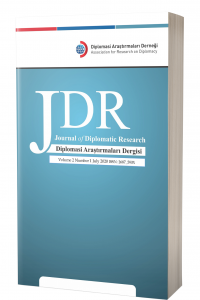George W. Bush, Diplomacy, and Going to War with Iraq, 2001 -2003
In 1991, the United Nations Security Council set up a weapons inspection and disarmament regime of Iraqthat remained intact for several years before withering under bureaucracy. After the terrorist attacks ofSeptember 11, 2001, the success and failures of this regime were brought into focus as President GeorgeW. Bush established leadership at the United Nations and announced an international war on terror. TheU. S. deemed these inspections, together with their contemporary incarnation, as less than satisfactory.The result was an obstinate administration, unrestrained by the end of the Cold War, in pursuit of whatthey deemed an unacceptable threat. The decision to go to War with Iraq ultimately was driven by Bush'sbelief that Saddam's intentions as Iraqi leader were far more important than his actual capabilities.
Anahtar Kelimeler:
Iraqi Wars, Weapons of Mass Destruction, George H. W. Bush, Saddam Hussein
George W. Bush, Diplomacy, and Going to War with Iraq, 2001 -2003
In 1991, the United Nations Security Council set up a weapons inspection and disarmament regime of Iraq that remained intact for several years before withering under bureaucracy. After the terrorist attacks of September 11, 2001, the success and failures of this regime were brought into focus as President George W. Bush established leadership at the United Nations and announced an international war on terror. The U. S. deemed these inspections, together with their contemporary incarnation, as less than satisfactory. The result was an obstinate administration, unrestrained by the end of the Cold War, in pursuit of what they deemed an unacceptable threat. The decision to go to War with Iraq ultimately was driven by Bush's belief that Saddam's intentions as Iraqi leader were far more important than his actual capabilities.
Keywords:
George H. W. Bush, George W. Bush, Iraqi Wars,
___
- Bacevich, A. J., (2002). American Empire: The Realities and Consequences of U.S. Diplomacy. Harvard University Press, p. 225.
- Yayın Aralığı: Yılda 2 Sayı
- Başlangıç: 2019
- Yayıncı: Diplomasi Araştırmaları Derneği
Sayıdaki Diğer Makaleler
Personalization in Political Leadership: An Analysis of Vladimir Putin
The Place of Public Diplomacy in Bulgaria’s Balkans Policy During the GERB Governments
Turkey's adjustment to the emerging post-western international order: The Russian connection
George W. Bush, Diplomacy, and Going to War with Iraq, 2001 -2003
